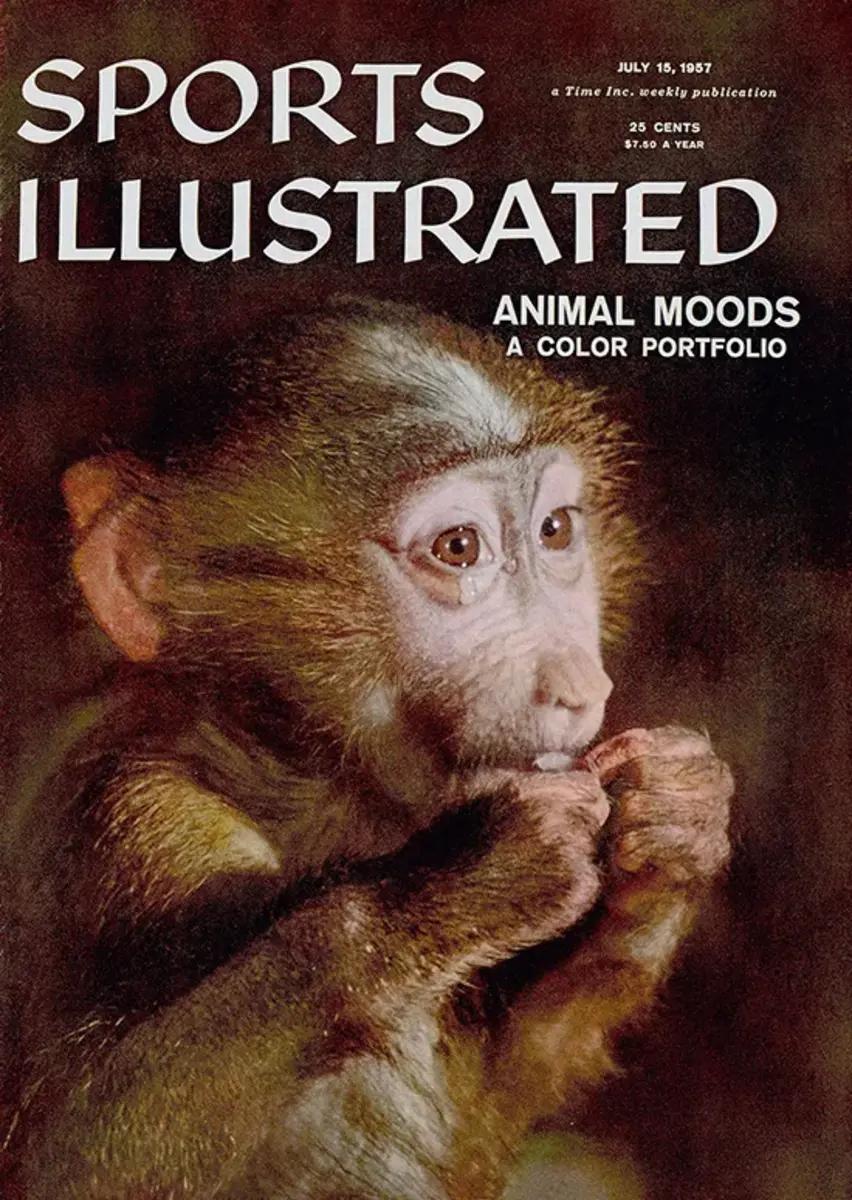SI:AM | It Isn’t Too Early to Start Thinking About Fantasy Football
Good morning, I’m Dan Gartland. I wish there was a way to prevent the friends in my fantasy football league from getting this email.
In today’s SI:AM:
🔮 SI’s Fantasy Football Draft Kit
🎯 Future targets for college conferences
If you're reading this on SI.com, you can sign up to get this free newsletter in your inbox each weekday at SI.com/newsletters.
Everything you need to win your fantasy football league
The start of football season might seem far away but NFL training camps actually open next week. (The Raiders and Bills are first, with rookies reporting on Monday.) So it’s the perfect time to start thinking about how you’ll build your fantasy roster.
Our fantasy crew rolled out its Fantasy Football Draft Kit this week and it’s incredibly exhaustive. I count 99 links in total, ranging from positional rankings, to mock drafts and potential sleepers. I can’t imagine there’s anything else you’d need to become a fantasy expert this season.
Because everyone loves hot takes, my favorite group of articles is probably Michael Fabiano’s “case against” series, in which he explains why some typical fantasy superstars might not be such sure bets. He totally convinced me to stay away from drafting D.K. Metcalf, who, while an undeniably talented receiver, was actually inconsistent from a fantasy perspective last season:
“Metcalf averaged 14.4 fantasy points per game last season, down from the 17 points he averaged in 2020. He was highly inconsistent, though, as he scored fewer than 12.1 fantasy points 10 times in 17 games. That’s nearly 60% of the time. He also scored seven of his 12 touchdowns in just three games (58%), and he was held without a single score nine times. Metcalf also had just one game with 100-plus receiving yards.”
And he did that with Russell Wilson as his quarterback. Now he’s going to be catching passes from either Geno Smith or Drew Lock.
Fabiano also made a compelling case to temper expectations about Cooper Kupp:
“Kupp was so unbelievably productive last year, however, that he could see a decline of seven to eight fantasy points per game and still average 18 to 19 points in 2022. That sort of projection would put Kupp on the same level as Justin Jefferson, who averaged 19.4 points per game and finished fifth in fantasy points among wideouts last season.”
I think what Fabiano writes about Kupp is important to keep in mind for all players when it comes to fantasy. It’s like the stock market disclaimer: “Past performance is no guarantee of future results.” If you had Kupp on your fantasy team last year, odds are you were near the top of your league’s standings. But if you missed your league’s playoffs last year, don’t reach to draft Kupp (or Derrick Henry or Davante Adams) thinking he’ll guarantee you a championship by replicating his record-breaking season.
One of my least favorite parts of telling people I work at Sports Illustrated is when they assume I must be a fantasy football expert and ask me for advice. I once met a friend of a friend who proceeded to message me throughout the season asking which guys he should start and sit, as if I wasn’t languishing at the bottom of my own league. But now, after having combed through SI’s actual fantasy experts’ incredibly detailed previews, I’m confident in my ability to field those questions this fall.
Also, let me recommend another free SI newsletter called Winners Club, which focuses on all of SI’s betting and fantasy content. You can sign up at SI.com/newsletters.
The best of Sports Illustrated
In today’s Daily Cover, Emma Baccellieri examines the legacy of A League of Their Own, which is celebrating its 30th anniversary this year.
Ben Pickman checks in on the Dream’s Aari McDonald, the No. 3 pick in last year’s WNBA draft, who has rebounded from a lousy rookie season and is looking more like the star she was at Arizona. … Pat Forde came up with a formula to determine which Power 5 schools are the most desirable targets in conference realignment.
Around the sports world
The Suns have reportedly matched Deandre Ayton’s record-breaking offer sheet. … The Yankees are reportedly no longer interested in trading for Andrew Benintendi now that it’s been revealed that he is unvaccinated. … Freddie Freeman’s former agent is suing Fox Sports radio host Doug Gottlieb for libel. … WWE’s Raw will reportedly be rated TV-14 for the first time since 2008.
The top five...
… things I saw yesterday:
5. This catch by a ball boy in Toronto.
4. Diamond DeShields’s emphatic block.
3. Oneil Cruz’s 97.8 mph throw from shortstop, the fastest throw by an infielder since MLB instituted the Statcast system in 2015.
2. Si Woo Kim holing out from a bunker after failing to get out on his first attempt.
1. Ian Poulter’s 160-foot eagle putt. (He made another long one for birdie this morning.)
SIQ
Though not organized by FIFA, the first Women’s World Cup concluded on this day in 1970. Who won the tournament?
- England
- West Germany
- Italy
- Denmark
Yesterday’s SIQ: How much money did a local Detroit kid receive in exchange for giving Babe Ruth’s 300th home run ball back to the Yankees?
Answer: $20. Here’s how the New York Times described the transaction:
“Today a youth was happy and richer by $20. Even before he circled the bases, Ruth was shouting to mates on the field: ‘I want that ball! I want that ball!’ Emissaries were sent scurrying after the youth who recovered the ball after it cleared the fence, and it was restored to Ruth in the Yankee dugout, in exchange for $20.”
That’s the equivalent of $442 today. By comparison, Barry Bonds’s 756th home run ball, the one that broke Henry Aaron’s record, sold at auction for $752,467 in 2007.
It’s safe to say no one in 1934 could have foreseen a baseball selling for three-quarters of a million dollars, mostly because no one could have foreseen that anyone would hit more homers than Ruth. The Times confidently declared that Ruth’s record would never be broken:
“A record that promises to endure for all time was attained on Navin Field today when Babe Ruth smashed his seven-hundredth home run in a lifetime career. It promises to live, first, because few players of history have enjoyed the longevity on the diamond of the immortal Bambino, and, second, because only two other players in the history of baseball have hit more than 300 home runs.”
Today, there are 152 players in MLB history with at least 300 homers. Cardinals first baseman Paul Goldschmidt is knocking on the door with 299. I bet whoever catches his 300th will get more than $20.
From the Vault: July 15, 1957

I first discovered this cover featuring a crying monkey way back in January when I first started working on what SI:AM would be, and I’m thrilled to finally be able to show it to you.
SI in the 1950s was basically unrecognizable from what it would become. Sure, there were plenty of articles about the big professional sports of the day—baseball, boxing, horse racing, golf—but the magazine also devoted plenty of space to sporting activities enjoyed by average folks. Consider this three-week run of covers from October of ’57: “How good a bridge player are you?” (Oct. 14), “Wings at Dawn: The 1957 waterfowl season” (Oct. 21) and “A Walk Into Autumn” (Oct. 28).
Those last two covers, like the one above, were an opportunity to highlight top-notch photography. Most of the magazine was in black-and-white (like most print media in those days), so a photo spread of fall foliage or zoo animals in full color was something that would sell copies.
The zoo spread is a goofy one. Headlined “The Human Zoo,” it features five photographs of zoo animals with captions ascribing them human emotions, like an orangutan who just got pulled over by the police.
The rest of the magazine is worth flipping through, too. There is a story about an 18-year-old standout athlete from Texas (who went on to play for the Cowboys), one about an Upstate New York man who invented a training device for pilots and then became an undersea explorer and a brief item about a New York TV station’s experiment with a new baseball broadcast technique: the centerfield camera.
Check out more of SI’s archives and historic images at vault.si.com.
Sports Illustrated may receive compensation for some links to products and services on this website.
